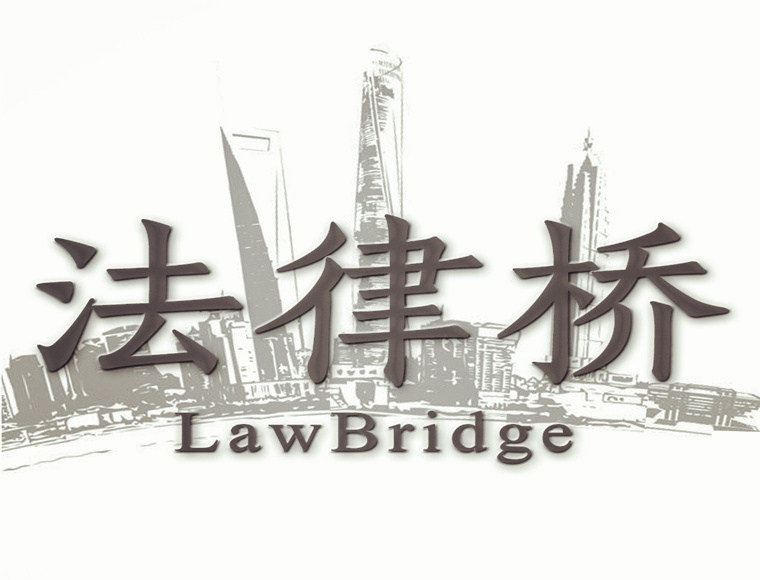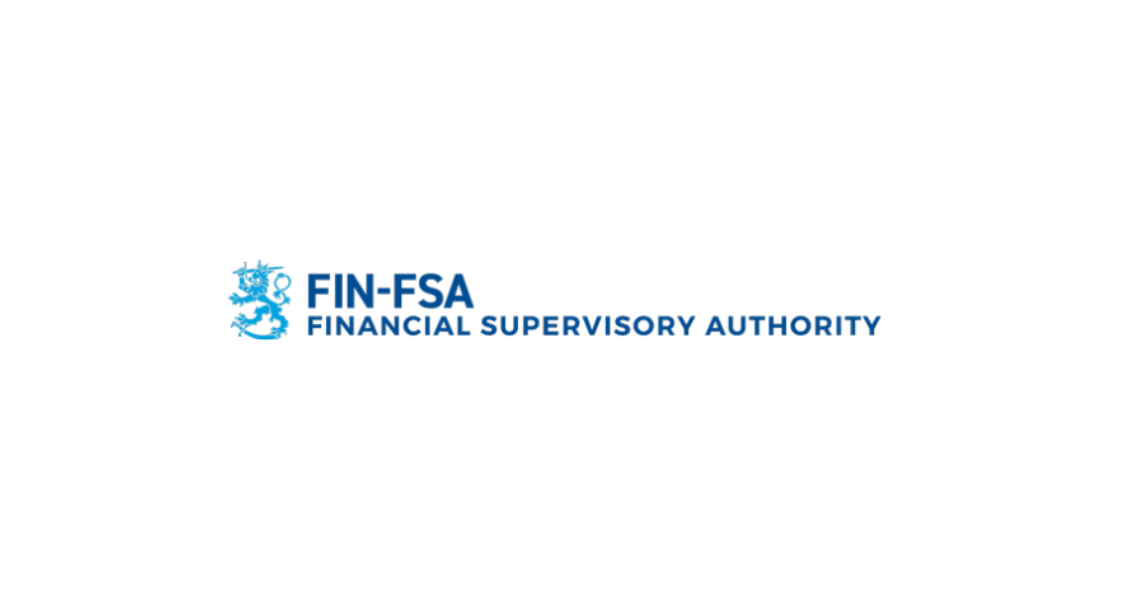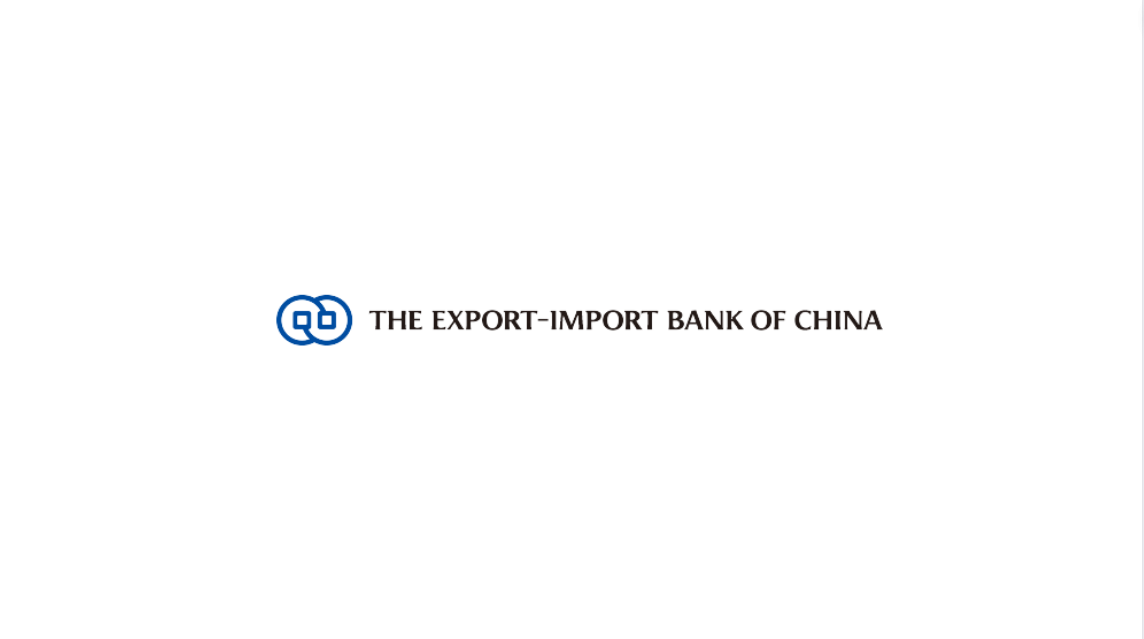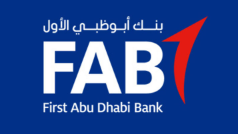Transition and Risk Analysis of Control Right in Enterprise Merger and Acquisition
01
Control Right and M&A
Control right is a group of exclusive rights to use and dispose of the core resources of the enterprise. Enterprise control right is the combination of forces that the actual controller of the enterprise can effectively influence the development direction, development mode and path of the enterprise, and the allocation of core resources of the enterprise, so as to realize the orderly development of the enterprise.
The formation or acquisition of effective control depends on the two factors of power base and capacity guarantee, and requires the organic combination of the two factors to form a synergy.
Mergers and acquisitions, that is, mergers and acquisitions. The so-called merger, in a narrow sense, refers to the economic behavior in which an enterprise obtains the property rights of other enterprises through property rights transactions, makes these enterprises lose their legal personality, and obtains their control rights, which is equivalent to the merger by absorption stipulated in the company law. In a broad sense, mergers refer to the behaviors in which an enterprise acquires the property rights of other enterprises through property rights transactions and attempts to gain control over them under the action of the market mechanism.
In a broad sense, mergers include new establishment mergers and other forms of property rights transactions in addition to absorption mergers. The so-called acquisition refers to the purchase of the assets and shares of the enterprise. Therefore, mergers and acquisitions are often collectively referred to as mergers and acquisitions. In fact, mergers and acquisitions include all property rights transactions conducted by enterprises in order to obtain the control rights of other enterprises under the influence of market mechanism.
This paper mainly analyzes related issues from the perspective of the acquirer in M&A transactions.
Excluding some forms of corporate "mergers and acquisitions", the essence of corporate mergers and acquisitions is the transition of corporate control. Therefore, the success or failure of corporate mergers and acquisitions is essentially the success or failure of the transition of corporate control. How to do a good job in the transition of corporate control is the core of corporate mergers and acquisitions.
02
Enterprises in mergers and acquisitions
Transition of Control and Risk Analysis
The transition risk of corporate control in corporate mergers and acquisitions can be divided into short-term risks and long-term risks according to the time point of the merger and acquisition transaction as a reference. Short-term risk mainly refers to transaction risk, which is mostly reflected within one year after the transaction occurs. Long-term risks mainly refer to the integration risks after mergers and acquisitions, and most of them need to be reflected within a few years after the transaction takes place.
Short-term Risks of Control Transition in M&A
According to the meaning of control right, the short-term risks of the transition of control right in M&A mainly include: transaction valuation risk, target asset equity defect and financial risk, operation and governance status information risk, target asset delivery risk, actual control right risk, human resource loss risk and so on. These risks affect the acquisition of the right basis and the establishment of capacity guarantee for the transitional control right in the merger and acquisition. They are basic projects, so they must be highly valued.
2.1 Transaction Valuation Risk
After confirming the company to be acquired, the two sides of the merger and acquisition are most concerned about the issue of reasonably estimating the value of the target company from the point of view of continuous operation and taking it as the reserve price of the transaction, which is the basis for the success of the merger. The valuation of the target company depends on the acquisition company's forecast of its future free cash flow and timing. The value assessment of the target company may be inaccurate due to inappropriate predictions, which creates the valuation risk of the merger and acquisition company. The size of the risk depends on the quality of the information used by the merger and acquisition company, and the quality of the information depends on the following factors: whether the target company is listed Whether the company is a non-listed company; whether the merger and acquisition company is a friendly acquisition or a hostile acquisition; the time to prepare for the merger; the length of time between the audit of the target company and the merger and acquisition, etc. That is to say, the evaluation risk of the target enterprise value depends on the degree of information asymmetry fundamentally. The acquisition price may be accepted higher than the value of the target enterprise in the pricing, causing the acquiring enterprise to pay more funds or more equity for the transaction. Mergers and acquisitions may result in excessive asset-liability ratios and target companies that cannot bring expected profits and fall into financial difficulties.
2.2 Underlying Asset Defects and Financial Black Hole Risk
Due to the information asymmetry of the parties involved in the merger, the transferor often conducts commercial packaging on the target company, conceals unfavorable information, and exaggerates good information, while the acquirer also often exaggerates its own strength, creating room for expectations, and both parties’ information disclosure is insufficient or distorted. Therefore, key information such as asset equity defects, value defects, and financial black holes (such as off-book liabilities, contingent liabilities, and external guarantees) are concealed, resulting in equity defect risks, target asset defect risks, and financial black hole risks in mergers and acquisitions. .
The risk of equity defect arises from various situations such as shareholders' failure to contribute capital, shareholders' failure to fully contribute capital, equity guarantees, judicial restrictions on equity, and re-transfer of transferred equity. All of the above situations will affect the quality and value of equity.
An important characteristic of many domestic companies is that they have large total assets, high debt ratios, low net assets, and low overall asset quality. However, financial accounting reports are affected by various factors such as exchange rates and inflation, and the book value is often difficult to reflect the actual value of assets; and the legal status of assets such as source, effectiveness, ownership, and restrictions is difficult to confirm through simple statements. Without careful research and verification, it may be found that the assets of the target company are lower than their actual value after the merger, or that these assets fail to play their intended role, or that the target company has a large number of inefficient or invalid assets, or even illegal assets. This not only increases the cost of mergers and acquisitions, but also may face the risk of judicial enforcement.
Many target companies' balance sheets do not reflect or fail to reflect incurred or potential liabilities. This is either due to the malicious concealment of debts by the target company, or due to the irregular financial system of the target company, the existence of unrecorded debts, or the existence of a large number of contingent debts. Among them, contingent debts are the biggest trap in mergers and acquisitions, such as guaranteed debts, bill liability debts, compensation for product infringement or environmental protection liabilities, pending or potential lawsuits, administrative fines, etc., due to their occurrence or processing results It is in a probabilistic state and cannot be predicted, and it is easy not to be known by routine review. If it happens, it may change the asset status and credit status of the target company, and thus directly affect the value of the target company, so the risk is even greater.
2.3Operation and Governance Status Information Risk
Business information risk is mainly caused by the target company’s parent company (generally the controlling shareholder) or other affiliated companies’ horizontal competition or related transaction information disclosure is not detailed enough or misleading, resulting in wrong decision-making by the acquirer. Governance information risk mainly refers to the information risk from the ownership structure, shareholder meeting, board of directors, manager system, etc., especially the anti-merger risk from the target company.
2.4Underlying asset delivery risk
Legal risks in determining the delivery date. The transferor not only needs to complete the corresponding equity change procedures before the delivery date, but also creates conditions for the actual exercise of equity, such as the resignation of the original director. Therefore, it is necessary to determine a reasonable delivery date and corresponding liability for breach of contract. Therefore, in the equity transfer agreement, it is necessary to clearly stipulate the specific date or time limit for the transferee to pay the transfer price and the transferor to deliver the equity. If the delivery is made in installments, the specific amount to be paid in each installment and the specific date for equity delivery should be agreed.
Legal risks in handover arrangements. The determination of the delivery date means that the transferee will fully exercise its equity. In order to smoothly intervene in the operation and management of the transferor, it is very important to make necessary preparations in advance, including personnel appointments, director election arrangements and many other issues. Therefore, when investigating the target company before signing the equity transfer contract, the transferee should communicate fully with other shareholders, directors, and company management of the target company to make basic preparations for exercising shareholder rights.
Legal risks in the supervision of equity certificates. Usually, the two parties will agree on the deposit and withdrawal terms of the equity certificate, and agree that both parties will submit the equity certificate and the price to the bank or law firm jointly selected by both parties for temporary storage before the two parties actually perform the obligations of transferring equity and paying the price agreed in the contract, unless specified by both parties. Authorized representative disposes, and neither party shall receive the equity certificate from the custodian, and the specific extraction method and liability for breach of contract have been agreed.
After the equity transfer, if the corresponding change procedures are not handled, the effect of the transfer will not be able to occur, because the confirmation of shareholder qualifications requires various certification documents. A limited liability company and a joint stock limited company have different procedures for the acquisition and change of equity, so it is necessary to carefully analyze the legal risks involved. (1) Legal risks in the equity change of limited liability companies. According to the law, after the shareholders of a limited liability company transfer their capital contribution according to law, they should cancel the original capital contribution certificate, issue a new capital contribution certificate, amend the company's articles of association and shareholder register, and go through the industrial and commercial change registration procedures. Taking the signing of the articles of association as the legal standard for shareholder qualification confirmation has typical legal significance. Shareholder industrial and commercial registration is only a publicity method for equity changes, and it is not a requirement for the establishment and effectiveness of an equity transfer contract, nor can it be against a third party. (2) Legal risks in the implementation of equity changes in joint stock companies. The acquisition of registered shares is usually subject to the register of shareholders, and the acquisition of bearer shares is subject to delivery and possession.
2.5De facto control risk
Equity is a right enjoyed by shareholders. One of its powers is to elect the company's directors and supervisors. The second power is to vote on major decision-making issues in the company's operation and management. Therefore, the ownership structure determines the distribution of corporate control rights. As the company's decision-making body, the board of directors controls the company's decision-making center, and the control of the board of directors is mainly reflected in the seats held by each shareholder on the board of directors. Therefore, the risk of corporate control is basically concentrated in two aspects: the ownership structure and the composition of the board of directors.
Equity structure risk:
1. If the equity of the target company to be acquired is excessively dispersed, and each shareholder has relatively little control over the company, it is beneficial for the acquirer to obtain a controlling position at a relatively small cost. However, after the merger, if the acquirer only holds a relative shareholding in the target company, excessive dispersion of shares may easily lead to other shareholders acting in unison and jointly manipulating votes to expel the acquirer from the board of directors and thus control the target company.
2. If the equity of the target company is too concentrated, for example, if one share dominates, the acquirer needs to spend a lot of money to gain control. If the acquirer fails to gain control, the original large shareholder will use its control over the shareholders' meeting to control the board of directors and then control the company's decision-making. It is difficult to avoid the situation where the original large shareholder damages the interests of small and medium shareholders and the company as a whole. Such as: not disclosing financial accounts to shareholders or even fabricating false accounts to deceive small and medium shareholders; disposing of the rights of small and medium shareholders or major rights of the company without the resolution of the shareholders meeting; controlling shareholders and target companies conducting related transactions that damage the interests of the target company, etc.
Board Control Risk:
The target company's director election, appointment and removal system is the focus of attention in mergers and acquisitions. The target company often sets director nomination clauses, director qualification clauses, term limit clauses, installment and grading clauses or reasonable dismissal clauses in the company's articles of association. In this way, the target company prevents and prevents the acquisition party from imposing restrictions on the board of directors through restrictions on the nomination method, number and qualifications of directors, the restriction that only some directors can be elected and replaced each year, and the restriction that the original director must have reasonable reasons for dismissal control.
2.6Human resource loss risk
In the process of corporate mergers and acquisitions, human resource factors often become one of the most critical factors for the success of corporate mergers and acquisitions. This is because only by fully paying attention to the human resources status of the acquired company can we find the key problems of the acquired company and avoid the failure of the merger. Studies have shown that only about 35% of mergers and acquisitions can reach the predetermined target, and most mergers and acquisitions that fail to reach the target are related to human resource factors.
(二)Long-term Risks of Transition of Control in M&A
The long-term risks of the transition of control rights in mergers and acquisitions mainly include: strategic integration risks, management integration risks, human resources integration risks, financial integration risks, corporate culture integration risks, and so on.
2.7Strategic integration risk and control
The development of an enterprise is inseparable from the planning and formulation of its development strategy, and the strategy of mergers and acquisitions is closely related to the overall business development strategy of the enterprise. Therefore, it is very important to analyze and prevent strategic risks in M&A. The following measures can be taken for prevention and control:
Conduct a comprehensive investigation and careful study of the target company: In addition to searching for information on the target company through various channels, the master and merger company should also collect information on all aspects of production and operation of each target company and information on its external environment. For example, information on the status of employees of the target company, information on senior management leaders, information on the development potential of the target company, information on the production and operation capabilities of the target company, information on the assets and financial status of the target company, information on the market environment, etc., based on which information is used to compare and judge the target company.
Improve information asymmetry: The impact of information asymmetry on financial risk mainly comes from the asymmetry of prior information, that is, the dominant company’s expectation of a comprehensive understanding of the target company’s real information cannot be fully realized, and the target company’s Disclosure of own information. Therefore, it is necessary to make full use of information inside and outside the enterprise, including attention to financial report notes and important agreements. Since information asymmetry between the parties to the merger is the root cause of the risk of evaluating the value of the target company, advantageous companies should strengthen information collection as much as possible and conduct a detailed review and evaluation of the target company before the merger.
Research on the internal and external environment of enterprises: The motives of enterprises to implement mergers and acquisitions are divided into four categories: developmental, multi-angle, defensive and survival. Researching and analyzing the motivation of mergers and acquisitions can not only pay attention to short-term interests, but more importantly, pay attention to the long-term interests of enterprises when formulating enterprise merger strategies. Therefore, it is necessary to conduct research on the internal and external environment of the enterprise, analyze the superior and inferior resources of the enterprise, and the opportunities and threats of the external environment, so as to formulate a realistic long-term development strategy of the enterprise and determine the starting point and goal of enterprise mergers and acquisitions.
2.8Operation Integration Risk and Control
Business integration risk refers to the risks arising from failure to achieve market share effects, management synergy, financial synergy, and business synergy for the entire enterprise after mergers and acquisitions, to achieve complementary advantages and economies of scale, and to fail to achieve the expected goals of mergers and acquisitions. Measures to prevent such risks, first, a detailed integration plan must be formulated in the early stage of mergers and acquisitions, including: the objectives of business integration, the content of integration, and the way of integration. Second, after the completion of the M&A transaction, in order to make the merged enterprise enter the strategic development track as soon as possible, it is necessary to start implementing the business integration plan as soon as possible.
2.9Human resources integration risk and control
In addition to the reorganization of assets, after the completion of corporate mergers and acquisitions, personnel restructuring is also involved. Problems in personnel arrangements will seriously hinder mergers and acquisitions. On the contrary, it will promote the smooth mergers and acquisitions of enterprises. Obviously, the risk of personnel management in mergers and acquisitions directly affects corporate mergers and acquisitions to a certain extent. success or failure. Under the country's current personnel management system, in order to effectively minimize such risks, first of all, in-depth communication should be conducted with the competent department of the target enterprise, and overall arrangements should be made for the senior management or important management personnel of the enterprise. It is necessary to retain outstanding talents to the greatest extent for the post-merger enterprises to use and give full play to their expertise.
2.10Financial Consolidation Risk
Integration of financial goals. The goal of financial management is the starting point and end point of financial management work. Only under the guidance of unified financial management goals can the new financial management organization run normally and effectively. The goal of corporate mergers and acquisitions is to create more added value through the improvement of core capabilities and the strengthening of competitive advantages. Therefore, in the process of financial integration, enterprises must closely focus on this goal, with cost management, risk control, and optimization of financial management processes as the main content, and through financial integration, strive to make the merged company manage its business activities in a unified manner. Unified planning of investment and financing activities to maximize the integration and synergistic effects of mergers and acquisitions.
Integration of financial systems. The integration of financial system is the choice of a series of financial policies implemented by the enterprise, including the integration of financial accounting system, internal control system, investment and financing system, dividend distribution system, and credit management system. Only when both sides of the merger and acquisition have done a good job in the integration of personnel, organization and system, can the merger and acquisition company implement effective financial control over the acquired company. In the final analysis, the integration of financial system is the selection of a series of financial policies implemented by enterprises. Since the financial policy is an independent and selective policy, the enterprises of all parties before the merger formulate or choose a financial policy that is beneficial to their own development according to their overall goals and realistic requirements. Before the merger, there will be great differences in its financial policies; after the merger, all parties merged into a group of enterprises, which have the same overall goals. Choose or formulate financial policies based on the interests and goals of the entire group after the merger.
Integration of financial organizations and functions. As a financial organization, the powers and responsibilities must be clear and mutually restrictive. Each department and every member within the department should have clear rights, responsibilities, and benefits. The setting of the organizational structure should be consistent with the complexity of the business process and the size of the business volume of financial management and accounting. If the business process of the enterprise is complicated, and the business volume of financial management and accounting is large, the financial organization should be correspondingly larger, and the internal division of labor should be more detailed, and it can be considered to divide the financial management and accounting organizations according to their functions. vice versa. The division of responsibilities and powers of financial organizations and departments must be clear and mutually restrictive. All departments and every employee in the organization should clarify their powers, responsibilities and specific tasks, so that the responsibilities and tasks between departments and personnel are clear, so as to avoid mutual disputes. This is the key to whether the financial department can effectively perform An important guarantee of responsibility.
After the formal signing of the merger agreement, the reorganization and integration will be carried out after performing relevant procedures in accordance with the agreement. For asset transfer, asset transfer procedures, and accounting treatment, it will truly seamlessly connect with the parent company in terms of financial management and achieve substantial reorganization. It is of great significance to maximize profits and implement effective management of financial activities such as operation, investment, and financing of mergers and acquisitions, and also to maximize the effect of production factors after mergers and acquisitions, and finally realize the purpose of revitalizing the stock of assets and enhancing the market competitiveness of enterprises .
Integration of financial management objectives: financial management objectives determine the choice of various financial decisions of the enterprise. Enterprises in different environments have different financial management goals, such as maximizing profits, maximizing enterprise value, or maximizing shareholders' wealth. In the financial integration after mergers and acquisitions, only if the unified financial management goals are determined, can the new financial management organization play its role and help the company's daily financial management behavior to be efficient and standardized.
Integration of financial accounting system: The integration of financial accounting system is the key to ensure the normal production and operation of enterprises after merger and improve economic benefits. The integration tasks of the financial accounting system are: to unify the accounting systems of both sides of the merger; to further strengthen the internal control system; to standardize the investment system, financing system, dividend distribution system, and credit management system.
Integration of financial organization and its functions: In order to achieve the purpose of controlling the financial accounting of the merged company, the master merged company assigns a financial person in charge to the merged company and gives him the following responsibilities: organize the daily financial activities of the merged company ; Monitor the financial affairs of the merged company; enjoy decision-making power when it comes to major events that affect the entire company; implement major decisions such as asset structure adjustment, resource allocation, major investment, and technological development of the merged company to the merged company and supervise and control the implementation of various budgets of the merged enterprise; review the financial report of the merged enterprise; be responsible for the business management of the accounting personnel of the unit of the merged enterprise; regularly report the merged enterprise's progress to the main merged enterprise Asset operations and financial condition.
Appoint the person in charge of finance to manage: After the acquisition target company takes over, it is necessary to ensure a smooth transition of financial management. The merger and acquisition company should appoint a financial person in charge as soon as possible to carry out integration work, conduct financial supervision, and harden property rights constraints according to the strategic intention and financial management requirements of the merger and acquisition company. The appointed financial officer shall bear dual responsibilities to the acquirer's parent company and the acquired party. At the same time, combined with the corresponding financial personnel management regulations of mergers and acquisitions, formulate the selection, appointment, assessment and reward and punishment systems of financial management personnel to improve the efficiency of financial work.
Integration of stock assets and liabilities: The purpose of mergers and acquisitions is to reduce operating costs, expand market share, realize re-optimized allocation of resources, and enhance core competitiveness. The integration of stock assets and liabilities helps to achieve the above goals. The object of its integration is to take the merger and acquisition enterprise as the main body, split the assets and liabilities of the merger and acquisition parties, and implement an optimized combination.
Strengthen fund management: fund management is related to the normal production and operation of the enterprise, and is the core of financial management. A fund management system matching the merger and acquisition company should be established as soon as possible, and comprehensive budgeting, dynamic monitoring and internal auditing should be adopted to prevent and control financial and business risks with cash flow as the link and information flow as the basis. At the same time, combined with the actual fund management of M&A enterprises, the centralized and unified management of funds should be realized, the supervision of fund use should be strengthened, and the efficiency of fund use should be maximized.
2.11Cultural Integration Risks and Controls
Mergers and acquisitions herald a major change in the business development and careers of the company and its managers and ordinary employees. During this process, personal values, behaviors and foreign cultures are prone to conflicts. Many studies have shown that the biggest obstacle to M&A integration comes from the conflict of different company cultures in the integration.
Cultural conflict
A person's culture is formed under the influence of years of life, work, and education. Managers and employees with different cultural backgrounds have different values, ways of thinking, customs, etc., which affect some basic aspects of business operations. Questions often have different attitudes and responses. Due to the influence of cultural differences such as languages, characters, and values in various countries in cross-border mergers and acquisitions, people in different "cultural marginal areas" in the enterprise will inevitably have conflicts in behavior and concept. If the managers in the advantageous enterprises insist on their sense of superiority in cultural values, and use "self-reference standards" as a criterion to treat employees with different cultural values from their own, they will inevitably be resisted, further expanding cultural conflicts, and thus imposing a negative impact on the enterprise.
Business sows crises.
the attitude of the staff. After the merger of two or more companies, it will inevitably involve the adjustment of senior leaders, the change of organizational structure, the re-examination of rules and regulations and operating procedures, the re-positioning of staff, and the removal and retention of redundant personnel. Employees' thoughts and emotions fluctuate, and their attitudes towards mergers and acquisitions vary. Studies have shown that no matter how fair and successful the merger appears on the surface, one company always sees itself as a "loser" and the other company sees itself as a "winner". Once the interests of managers who consider themselves "losers" are damaged in the merger, they will use their influence on the organization and employees to increase the resistance in the operation after the merger. If employees are indifferent to mergers and acquisitions and feel that they have been treated unfairly, they will show confrontation and disdain, which will increase the cost of mergers and acquisitions and bring obstacles and difficulties to mergers and acquisitions.
In practice, we can divide the steps to avoid such risks into three steps: the first is analysis and comparison. Through careful research and comparative analysis of the original company and the target company, it is determined to correct, discard or improve the content, and to carry out propaganda and education activities for a unified understanding. The second is integrated communication. In actual work, corporate merger and acquisition culture integration is the process of mutual adaptation and trade-offs of the original corporate culture after the merger and acquisition, and finally the process of achieving the unity of values. On the contrary, it is difficult to build a stable organic whole. Again, cultural innovation. Enterprises should boldly reform the traditional concepts or concepts formed by the original enterprise for many years, innovate and eliminate the old, and innovate the cultural atmosphere.
03
Conclusion
Although there are huge risks in corporate mergers and acquisitions, there are far-reaching business opportunities at the same time. Scientifically avoiding M&A risks is the core issue for enterprises to carry out M&A actions. Strengthening the prevention and control of M&A risks and research on preventive countermeasures can lay a solid foundation for the transition of corporate control rights in M&A and achieve the expected goals of M&A.
PE & TMT Lawbridge

Presiding lawyer: Yang Chunbao, first-class lawyer
Phone/WeChat: 1390 182 6830
Business contact and submission email:
chambers.yang@dentons.cn
Address: Floor 9/24/25, Shanghai World Financial Center, 100 Century Avenue, Shanghai






















































First, please LoginComment After ~